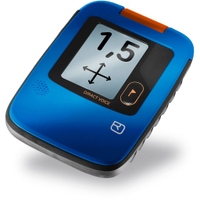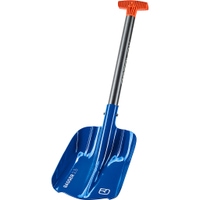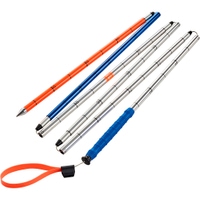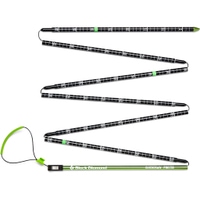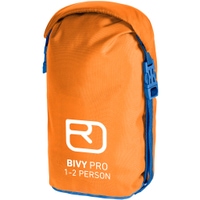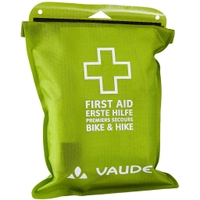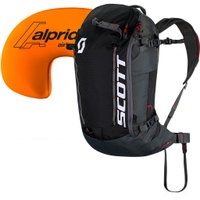An Avalanche Safety Equipment is necessary for touring outside of secured ski resorts. There is a big difference between all the various types of avalanche safety equipment. You’ll have the standard safety gear, the advanced safety equipment, and additionally the individual equipment. Below this article, you can find our ‘Checklist of necessary equipment for your next tour’.
-
- The standard avalanche safety equipment
- Avalanche beacon
- Avalanche shovel
- Avalanche probes
- Advanced safety gear
- Additional individual equipment
- The avalanche airbag
- Various avalanche airbags systems
- The right backpack sizes
- Good to know
- Checklist: avalanche safety equipment
- The standard avalanche safety equipment
Please note, that even the most premium equipment and the newest technologies can be useless, in case you do NOT have a proper Avalanche Safety Training as well as prepared Risk Management, and if you did not practice appropriate processes during a possible avalanche accident.
THE STANDARD AVALANCHE SAFETY EQUIPMENT
The standard avalanche safety gear contains a tracker beacon (transceiver), an avalanche probe, and a shovel. These tools are basically a norm for touring and each member of your tour is naturally expected to have the complete kit. The standard avalanche safety gear makes it possible to help people during an avalanche accident.
This gear offers the possibility to find and rescue people that have been buried under an avalanche.
Avalanche Beacon
Most of the manufacturers offer a variety of top high-end models and affordable basic models. The top models offer special functions like the search for multiple burials in restricted areas. This can be very helpful for locating multiple victims. Only the most experienced users can take advantage of such functions.
Beacons (as well called transceivers) with more than three antennas are considered to have an advantage when it comes to speed, clarity, and accuracy of received or sent signals, over beacons with only two or one antennas. The basic models are much easier to work with and are recommended for any normal winter sportsman/sportswoman.
With most of the transceivers, there is a possibility for a software update. Therefore it is recommended to have it checked by your specialized shop before the beginning of each winter season, to get the newest software version. You should watch out for the data, manufacturers indicate for the transceivers reach and search width. When the settings are not perfect, the signal of your transceiver can vary in large proportions. There are differences between individual search devices because the search-reach is not the only criterion, which guarantees the quality of your beacon during sending signal phase and rough search. All transceivers should have a 20m search width. At the beginning of each tour, you should turn on your beacon and proceed with a beacon-group-check.
Handling of your transceiver should be professionally trained. It doesn’t matter how technically sophisticated your device is, it is only as good as the person that is using it!
Avalanche Shovel
Avalanche shovels should come with an aluminum blade. They can differ in many features. The larger the blade of your shovel the more snow you can remove per movement. The optimum size is 28x25cm. Blades sizes such as 21×21 cm are too small and do not support efficient shoveling. Except for lightweight shovels used during ski-tour racing, the weight of each shovel usually differs according to the size of your shovel’s blade.
You can always consider a telescopic handle and some manufacturers even offer you the function of mounting your blade on like an ax. This way your shovel becomes a multifunctional tool. Shovel blades can be quick-locked onto your handle, or put apart to save space in your backpack.
The variability of shovels differs in various models. Some come equipped with an integrated pocket spike, or a small handy saw, other shovels are adapted for building a rescue sled.
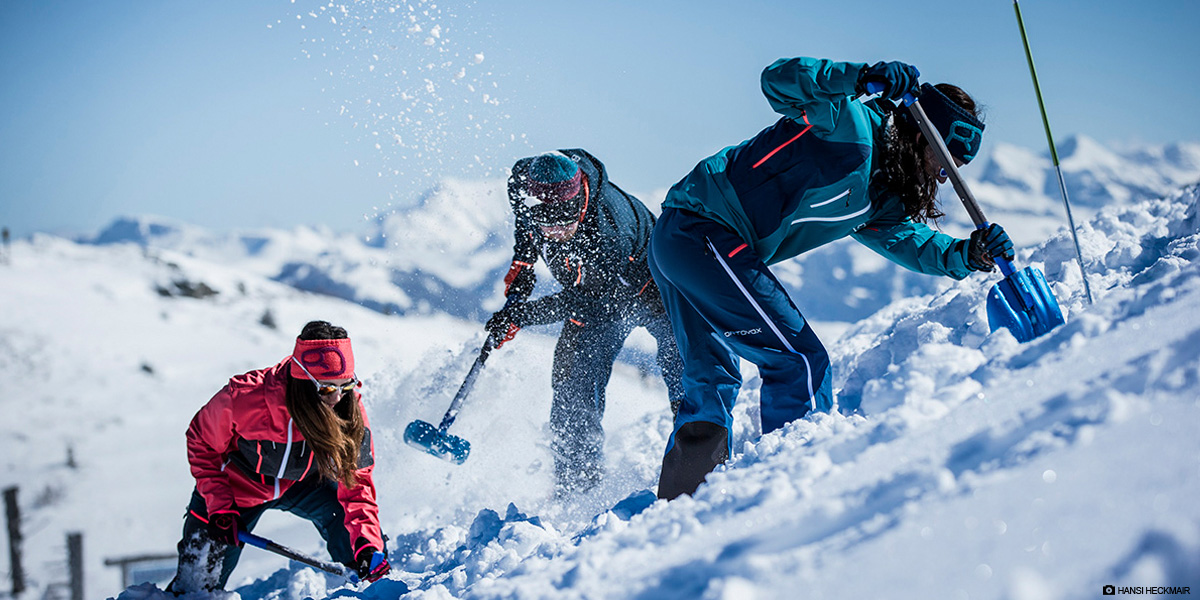
Avalanche Probe
Avalanche probes should be set with a quick-release system and have at least 240 cm in length. During large avalanche accidents, longer probes are usually better. Except for ultra-light models, aluminum probes of the same length do not really differ in diameter and weight. A probe with lengths of 240 cm weighs about 250g. Carbon versions are a tad lighter. Finding out the depth in which your victim is positioned, helps you to increase the chance of victims’ survival.
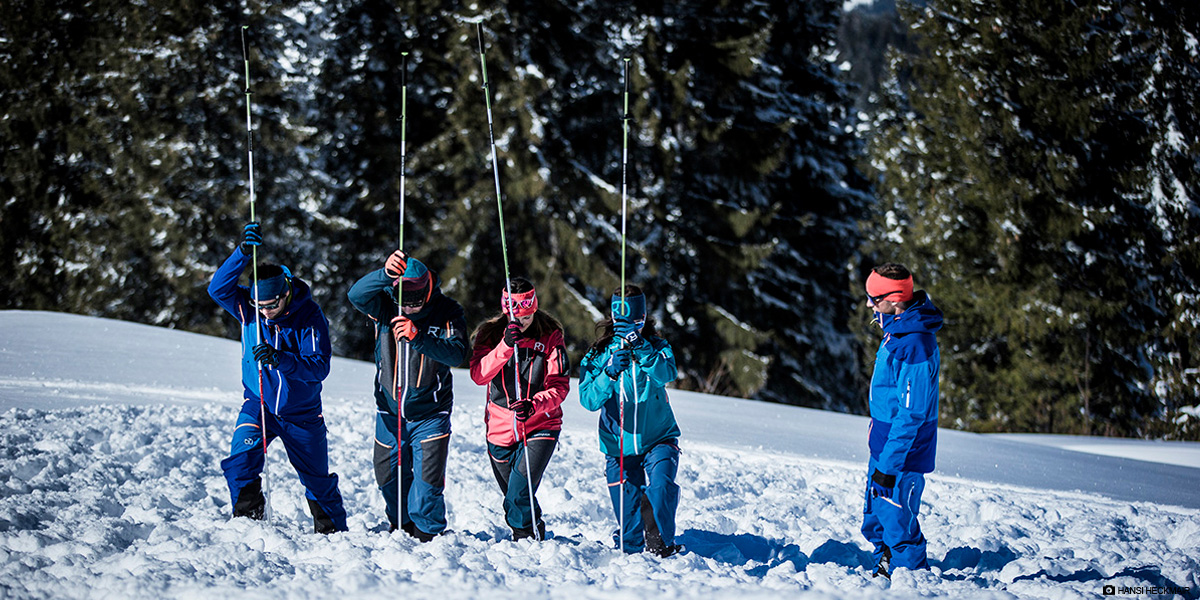
Tracker Beacon, shovel, and probe set-configuration
In terms of security, no trade-offs are allowed. Here you can find a range of possibilities how you can compile a set of tracker beacon, shovel, and probe that perfectly fits your needs.
ADVANCED SAFETY GEAR
A cell phone, a first-aid kit, and a bivy sack count as advanced safety gear. This equipment is not required by everybody, but it should be part of the equipment of some of your fellow ski tourers within your group.
ADDITIONAL INDIVIDUAL EQUIPMENT
The additional individual equipment can diminish the risk of being completely buried under an avalanche (avalanche-airbag-system) and increase the chance of surviving under an avalanche for an extended period of time (Avalung system). You can not only rely on this kind of gear; airbags and avalungs are only complementary equipment to your standard avalanche safety gear.
The avalanche airbag
The avalanche airbag backpacks can easily reduce the risk of complete burial in a sliding avalanche. The airbag works as a larger part of your body, which will help you to float close to the surface of the avalanche and keep parts of your body or your whole body above avalanche debris.
During an avalanche slide, you have to manually pull the handle out of your airbag backpack to release it. The airbag can be filled in two ways: manufacturers such as Arva, BCA, Mammut, Ortovox, and Scott use pressure-induced systems which fill the airbag with air. The pressure is released by the cartridge which is connected to the airbag inside of your backpack. Each manufacturer develops slightly different systems, with different cartridges that are not usually compatible across different brands.

The brand Pieps uses the jet force system – a rechargeable electronics system that activates ventilators, which fill in the airbag with the surrounding air.
Various Avalanche Airbag Systems
The avalanche airbag packs are offered in two different types. The JetForce Backpacks are delivered ready to operate. Backpacks with cartridges – except for Scott – are usually delivered separately. And therefore cartridges have to be purchased independently.
Cartridges with compressed air (steel or carbon made) are the more affordable version of airbag systems. These types of cartridges have to be filled in after each use. Some might come labeled as ‘self-non refillable’, these can be brought back directly in our shop only if the lid of the cartridge is on the bottle (deposit reasons) – therefore store the old lid of your cartridge properly. In our shop, you can refill the cartridge for around € 25. Cartridges labeled as ‘self-refillable’ can be refilled by your specialized shop, at a diving or paintball shop. Those are made out of aluminum and heavier than the ‘self-non refillable’ model.
A JetForce System is in comparison with pressure cartridges somehow heavier. This system has a large advantage, which allows you to release your airbag multiple times. That is especially good for testing your bag, before every tour. The airbag folds itself back into the backpack.
Our set configurator at the top of each page with avalanche backpacks will help you to combine all compatible airbag backpacks, with suitable cartridges, and allows you to buy them for a special buy-in-set price.
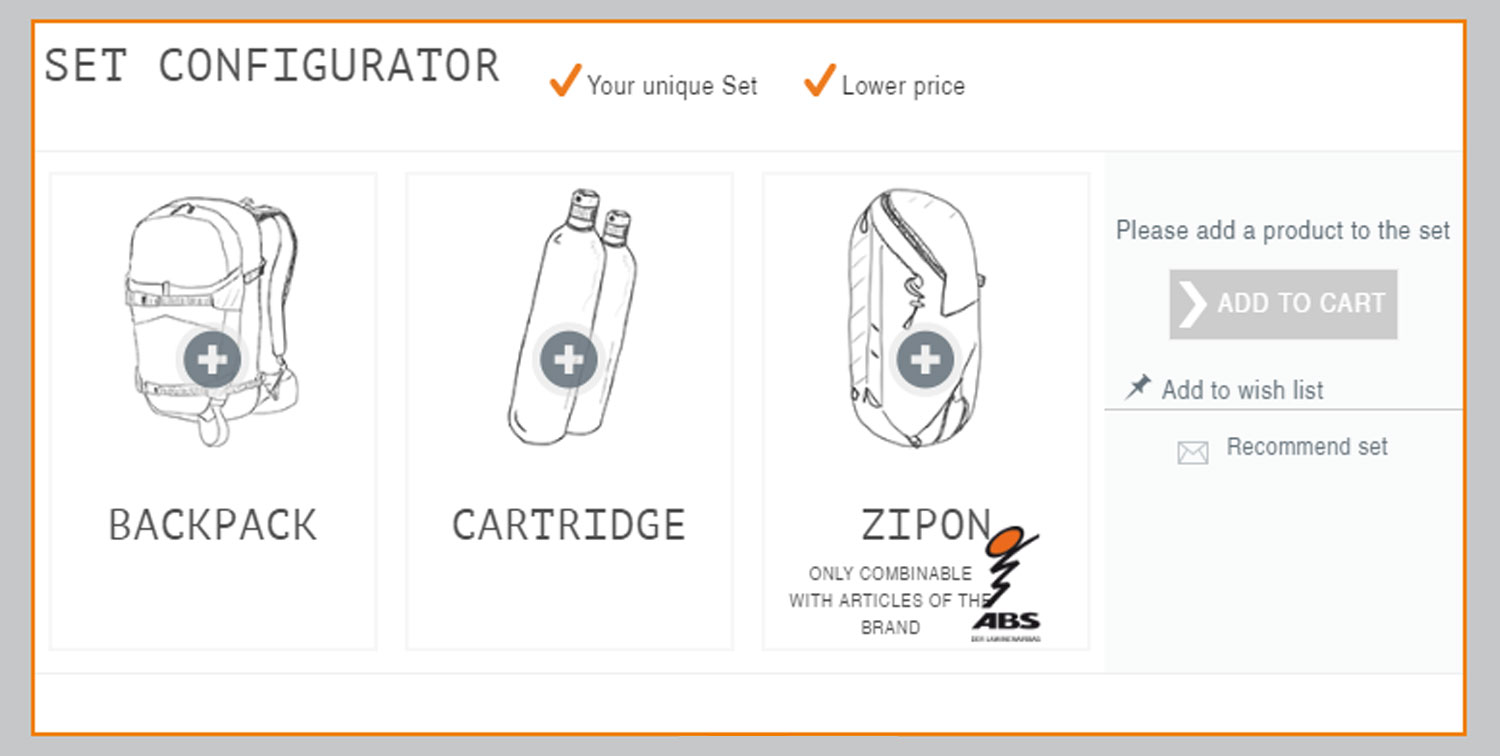
Interested? For more information about Avalanche Airbag Systems and the different manufacturers check out our blog → How Avalanche Backpacks Work: An Overview of Diverse Avalanche Airbag Systems.
The Right Backpack Size
The size of your avalanche airbag backpack has to be chosen accordingly for the purpose of your tour. For some heavy freeriding or short one-day tours, we recommend you to get yourself a 15-20 liter backpack. For longer or glacial tours which require some additional equipment such as crampons, backpacks with 21-30 liter are recommended. If you plan to tour for several days and need to take a lot of gear with you, consider purchasing a 31-45 liter large backpack. Some manufacturers don’t indicate clearly, whether the given volume is considered with or without the airbag system. To be completely sure, we advise you to visit your specialized retailer.
Good To Know
Some types offer an integrated back-protector or give the possibility of attaching a compatible piece. Also, the shape of the trigger varies amongst different brands. The release might get harder if you like to wear mittens and your trigger is the T-shape version – you should then consider a rounded trigger.
The avalanche airbag pack should be brought to an authorized service, for regular check-ups. The JetFroce types have to be recharged, and a yearly test release is recommended for all systems. This way you can detect possible failures in the system and avoid a fatal accident.
Please read your guidebook carefully and listen to any manufacturer’s recommendations.
Learn more about back protection under:
→ Back protection necessary safety equipment
CHECKLIST: AVALANCHE SAFETY EQUIPMENT
- Avalanche beacon
- Avalanche shovel
- Avalanche probe
- First-aid-set
- Mobile Phone (flight mode)
- Bivy bag
- Map
- Backpack or avalanche airbag
This checklist should be used as a help for you to get ready for a backcountry adventure. It should be adapted according to the weather conditions, tour plan, and preferences. Additional gear is required for multiple-day tours, glacier tours, or high alpine tours. You can also download our Skitouring Packing List here.
Ski Touring is your passion? Keep informed about further topics like:
→ Ski touring boots: Sole length and mondo point
→ HOW TO: Cut ski climbing skins
Foto Header: ©Ortovox


